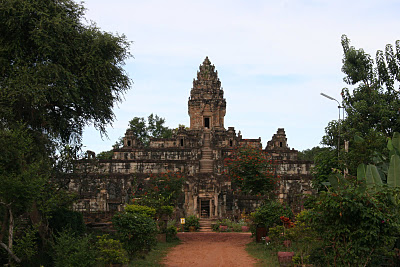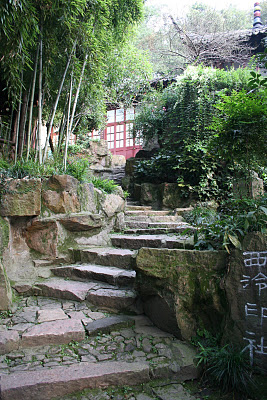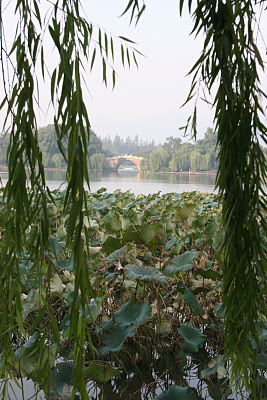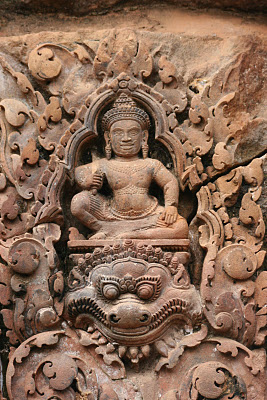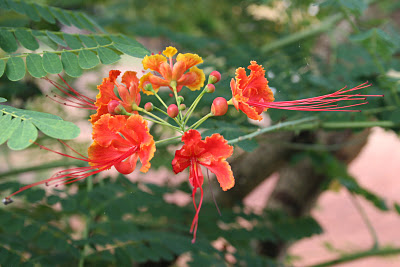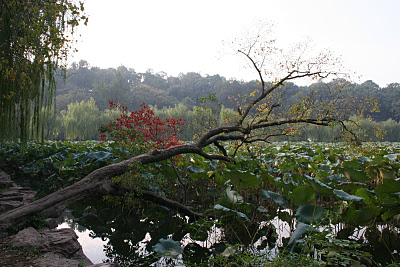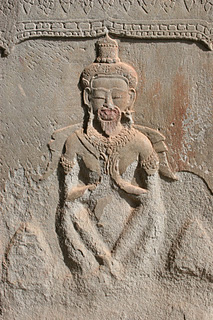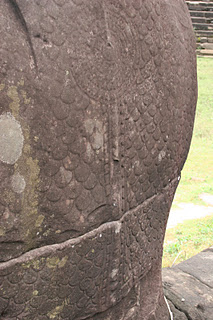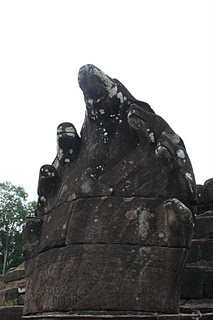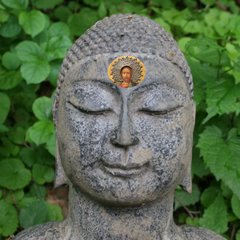Spring Ice
On page 86 of "In Search of the miraculous," Gurdjieff tells Ouspensky,
"The ray of creation establishes seven planes in the world, seven worlds within one another."
What this means relates directly to the fractal universe depicted within the Enneagram. All of the different levels of the universe exist simultaneously, together, at the same place -- which is everywhere. That is to say, even the highest level of the universe is right here, right now. We are part of what makes it up. It is part of what makes us up.
So there is no need to go "out there" to search for the divine. Higher energy doesn't come from "outside" us to enlighten us. All of it is right here, right now. It is simply a matter of which rate of vibration the organism--the body-mind, or, if you will, the bodhi-mind-- is attuned to that determines what it can and cannot sense.
This is strikingly consonant with the Zen Buddhist concept that the Dharma is always and everywhere. Enlightenment is no more than the blow of a Master's cane away. In fact, it is already here. The dilemma we find ourselves in, which is that we do not experience enlightenment, does not mean it is not there. It is always here, everywhere.
We encounter this idea over and over again in Dogen's Shobogenzo. The ubiquity of the Dharma, the absolute and unerring penetration of the truth into every level, every atom, molecule, and quanta, is undeniable and immediate. It is our own lack, as Jeanne deSalzmann would have put it, that prevents us from experiencing this. And it is only a total, frank, abject and absolute suffering of this fact of separation that can begin to lead us towards a greater inner unity.
Of course there are techniques. We have cosmologies and understandings to help guide us, but we are all traveling towards a continent as unknown as the meaning of life itself.
In the aforementioned passage, Gurdjieff goes on to describe the difference between matter and materiality.
"People are accustomed to think that matter is everywhere the same. The whole of physics, of astrophysics, of chemistry... are based on this assumption. And it is true that matter is the same, but materiality is different. And different degrees of materiality depend directly on the qualities and properties of the energy manifested at a given point." (italics mine.)
Of course, materiality is determined by rate of vibration. A simple example is water. At the lowest temperatures found on Earth, it is ice, a solid. At what we call "ordinary" temperatures, that is prevailing temperatures on the surface of the planet, the majority of it is a liquid; when temperature rises more, it becomes a gas. Superheated gases are, in physics, called plasmas, and if enough temperature and pressure is attained in a plasma, such as the Sun, it goes supernova, engaging in an unparalleled act of creation.
Gurdjieff tore a page directly out of the textbook of natural sciences in explaining that our inner states are no different. It takes heat -- the heat of an inner solar system-- to raise our inner rate of vibration and lift us from a solid into a liquid, and then ultimately a gaseous state.
Dogen also touches on the question of matter, energy, and materiality. In book 4 of his Shobogenzo, (Nishijima and Cross Transalation, Dogen Sangha press, 1999) chapter 73, page 11, we find him commenting as follows on the five powers:
"Wisdom as a power is of deep and long years, and is like a ferry coming to a crossing. For this reason, it was described in ancient times as "like a crossing getting a ferry." The point is that a crossing is inevitably just the fact of the ferry. A crossing not being hindered by a crossing is called a ferry. Spring ice naturally melts ice itself."
This passage follows on and relates to the five root faculties, but we won't get into that just now. What relates this passage to our current discussion is that we see one of the essential ideas of Zen revealed in parable: force and matter are inseparable, and together give rise to materiality.
In Zen, action itself is seen as the materiality. In the Gurdjieff work, that is called third, or reconciling, force.
Here we see that spring, the action of a season which increases temperature, encounters solidity, ice, and melts it. Spring ice is one thing, but within it it contains both "spring," force, which is transformational, and ice, matter, which can be transformed.
Spring ice can thus be likened to a quantum state: an undecided combination of momentum and position. Force/momentum and matter/position together resolve to become materiality, in this instance, a materiality that undergoes transformation into water through the de facto, eternal and inseparable union of the two properties.
To me, this echoes in a weird and beautiful way what physicists call the collapse of the quantum state, which gives rise to materiality, or, what we call reality.
Thanks for bearing with me through that one. I know it seems rather theoretical, but there are times when we should take a look at theory.
Circulation
Because today is the one-year anniversary, I want to offer something specific and personal from my own work. I have been working on this for about a year now, and alluded to some things related to it here, but today I will attempt to pass it on in a form which may prove useful to others. Those of you not intimately familiar with the Gurdjieff work are requested to excuse the fact that this is going to delve into some relatively esoteric territory.
A week ago, while working with some other Foundation members, a discussion took place about the circulation of energy in the body, in particular the relationship of Qi gong understandings to the understandings of the Gurdjieff work.
The conventional understanding in most systems is that energy circulates in the body from the top of the head to the base of the spine, and then up the front of the body to the top of the head again. It is known that the reverse can also be true.
In relating the system of the Chakras and the Enneagram to this question, a close inner study will establish, as I pointed out in the essay, that this is a deceptively simplified examination of the question.
It is possible for energy to circulate in many ways, that is true. However, in the same manner that centers can take from each other in a wrong way (as Gurdjieff explained at length) it is also possible for energy to circulate in manners that produce spectacular "special effects," but fail to help it evolve in a lawful context. This is what happens when you make your chicken soup by having the chicken run through a kitchen with boiling water on the stove. (Read the chapter in Beelzebub's Tales to His Grandson entitled "Beelzebub in America.")
The reason that Gurdjieff passed on the Enneagram was to give us a tool to understand this question in accurate detail.
The first major point is that energy from the top of the head is distinct from the other energies we study in circulation. This should be clearly understood through specific inner study. The circulation that man is responsible for, which relates to the multiplications, is all preparatory in nature. If he prepares himself sufficiently, the energy from the top of the head can be useful. It is of little or no use in raising the rate of vibration if it is poured into a container that is not properly sealed.
The study of the multiplications and our inner circulation is a method of helping the vessel to become intact, so that this energy from the top of the head--should it arrive--does not go to waste.
In studying the inner circulation of energy, it can be established that every iteration of the multiplications in the Enneagram consists of two triads. Each triad forms a stable relationship of its own for the first or the second half of the multiplication in question. Each of these triads needs to be created within a man and studied from within the state in order to understand the relationship that arises and the stability that results.
I could discuss the first multiplication, but let us take a different example, since it relates directly to the question of energy circulating down the back and up the front of the body.
In the fifth multiplication, we find the numerical sequence 714285.
The first triad, 714, involves movement of the energy from the top of the spine (NOT the top of the head) to the base of the spine down the back of the body. The energy, however, does not stop there. Every iteration of energy circulation is incomplete if all it does is move from one point to another. Third force must come in. That is to say, there must be affirming, denying, and reconciling factors in the inner relationship of the three flowers one is studying.
In this instance, energy moving from the top of the spine (throat) to the bottom of the spine (root) must then move into the solar plexus, or abdominal region. The relationship of these three flowers forms a stable triad.
This stable triad is the precursor to the second one, which moves from two (sex center) to eight (third eye,) a classic relationship well understood in yoga schools and even represented in some of the movements Gurdjieff taught.
This is the energy that moves up the front of the body, but once it travels up the front, it is not done. It must find its reconciling point in the flower at the center of the spine, referred to as the heart.
A careful study of inner triads will bear much fruit. Is this practice, possibly, what Gurdjieff was alluding to when he referred to bringing one's self into a state that was "three centers balanced?" Personally, I think it may be so.
The study of the circulation is undeniably interesting. However, we are left with the peculiar remark in the yoga that the ultimate aim is to stop the turning of the wheels. ...what is that all about?
There are hints contained within the study of the inner triads, the relationships between the flowers in their sets of three. Out of this study may grow a greater interest in how all the energy within the system can be present simultaneously, so that instead of sensing the circulation of energy, we live within the direct experience of energy.
The experience of point-to-point becomes the experience of a single point, a completion of the inner enneagram, which --as is lawful and inevitable--then becomes a single note in a much larger octave.
In this way we perhaps begin to understand the experience of consciousness as not being force/momentum, or matter/position, but rather a unity of materiality arising from the two.
This understanding, central to Dogen's conception of Zen, can be practically studied in a physical manner through a thorough scrutiny of our inner state.
May your trees bear fruit, and your wells yield water.

